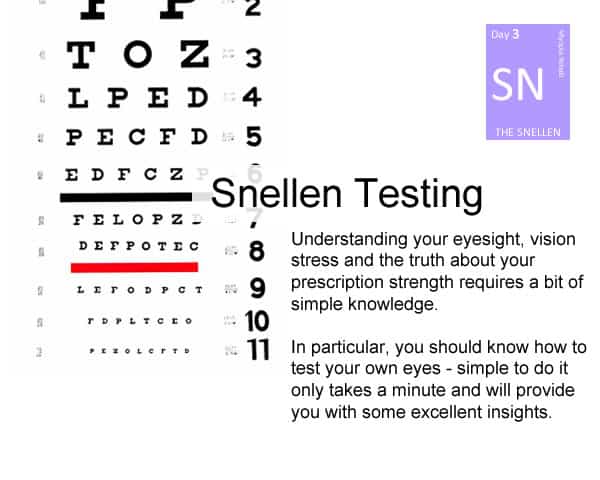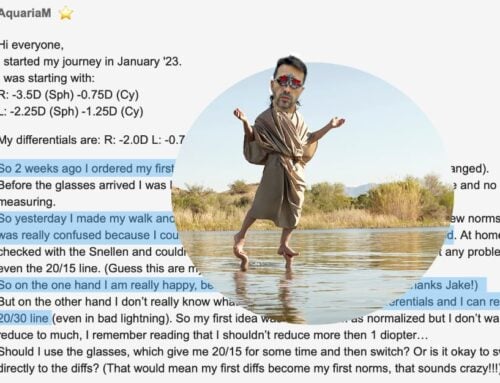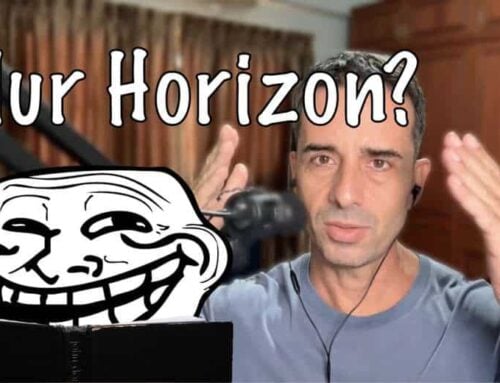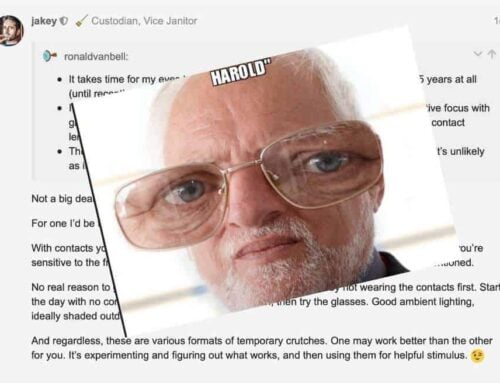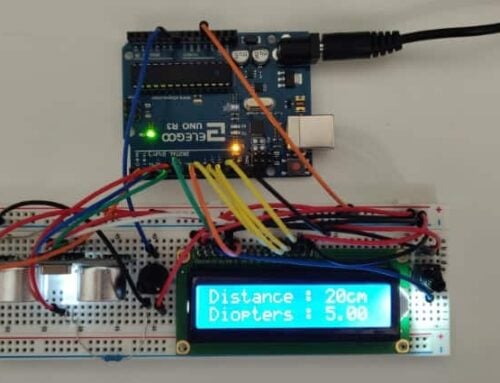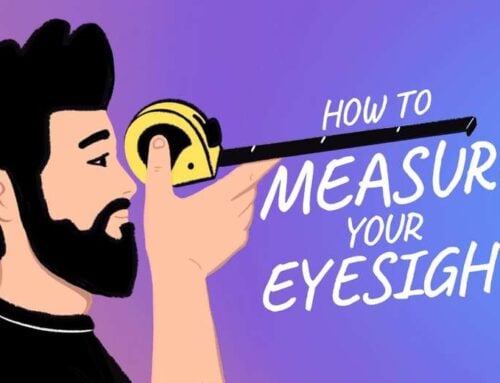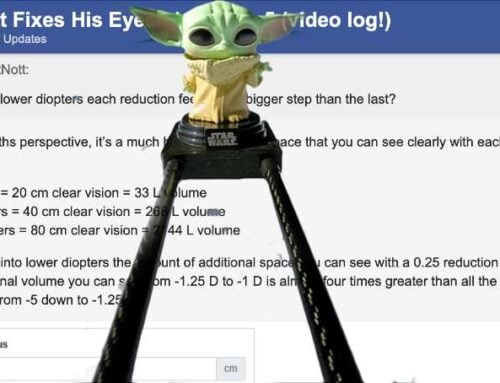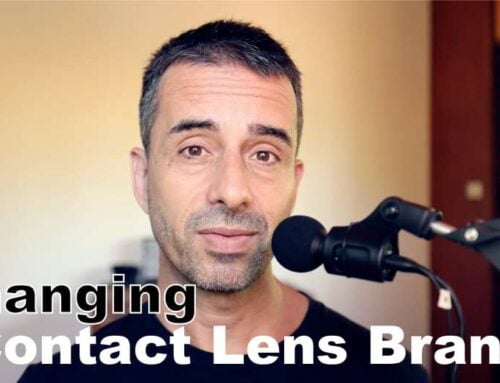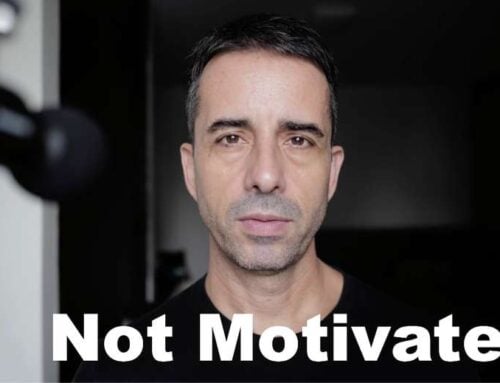Another excerpt from our myopia rehabilitation program:
Welcome back!
Hopefully you are enjoying the experience of observing blurry vs. fully sharpness, as we had discussed on Day One.
From Day Two, if you found that you need differential glasses, hopefully you have already found a source, decided between disposable contacts or an inexpensive eyeglass diopters. I will be keeping an eye on the forum for questions about it – also, please start separate topics for these questions, I will be more likely to notice new questions that way.
We are slowly putting together the building blocks of a successful myopia improvement program. If you feel overwhelmed at any point and if the forum does not provide you with enough answers, you can also send me an e-mail. As this is a free program and my spare time is a bit limited, I can’t always promise to have time to respond. But I will do my best!
Let’s move on to today’s subject:
The Snellen
To preface all of this, a visit to your eye care professional is still a good idea. There are some measurements we will not be doing here as part of this short program. They have some neat instruments, like the autorefractor. You may find some resistance, disbelief, or other less than helpful interpretations from these establishments at times – keep in mind that you are primarily there for check-ups, astigmatism / cylinder measurement – it’s not necessarily any longer your sole source of vision health recommendations.
The main problem with the lacking client education at most optometrist offices goes back to measuring the degree of your myopia.
Today we are going to start learning about how your eyes really work, with (fairly) objective systems, and ways of tracking changes. This is very important and will give you the freedom to self diagnose myopia, and gauge for yourself whether my claim of being able to reverse myopia are actually true.
Follow the instructions provided with your Snellen chart to set it up.
I strongly recommend permanently attaching he chart to a wall, and having a line measured out from where you read it – consistency in every aspect is important to track measurements.
The rest, very simple, and will be very telling:
We will take a series of measurements. These are designed to tell you more about your vision, stress, and specific deficiencies. This is a three day project, after which I will post another forum link – if you like, post your findings there and I will provide some comments to help you understand the meaning of your results in more detail.
First, we will do a Snellen test first thing in the morning.
Make sure to do this before you eat anything, before you drink any coffee, before you spend ANY time in close-up focus. No reading the paper, no checking e-mails. Snellen first. Wait for at least 30 minutes after waking up, and ideally spend a little bit of time being active. A walk outside would be perfect.
Hopefully you have a space set up for your Snellen with good natural daylight. If not, a brightly lit room will have to do – the best quality measurement of your eye’s peak ability will always be full natural light, morning measurement.
Check left eye only, right eye only, and both eyes. Write down the results (eventually we will have a journal available here, but all that tech still eludes me at this moment).
As with all days, the closer you follow along, the higher the chance that after 60 days you’ll have a notable vision improvement to show for your efforts!
Repeat the measurement again after spending an hour working on the computer or reading, an hour after breakfast, coffee, whatever your normal routine is. Hopefully this is possible for your personal circumstances.
Now we have two measurements. First, your peak performance. Second, a measurement that indicates how strain reactive your eyes are to near-focus exposure. As this isn’t a one-on-one targeted program, I may not have time to evaluate all of your individual results, but I will try to pick out relevant ones to illustrate what is happening (on the forum, in three days).
When we combine your current prescription strength, progression value (how much worse your vision has been getting over a period of time), and the differential of peak Snellen vs. Snellen after an hour of near-focus, we get a good first glimpse at your recovery potential.
In a one-on-one session these factors allow us to tell you with quite closely how much you can recover your vision, and how long it takes – so take these measurements now, there only is ever one beginning to rehab, and pre-program values are the most telling.
If you already are practicing some things, as I’m finding from the forums, these values won’t be as indicative, but we can still get quite a bit of valuable information about the state and plasticity of your eyes.
A third measurement later in the day, after you had a regular scheduled day. Maybe do it after work. If the natural light is degrading, substitute a well lit room.
Do a last measurement after dinner, watching TV, etc. just before going to bed.
If you have the time and circumstance, duplicate these measurements with natural light and artificial light. Natural light, meaning that the late day measurement will be in less bright conditions – that is intentional.
Repeat all of this for three days.
You will likely find quite a bit of variance in these measurements. There are a few immediate lessons from this:
Your vision is NOT a fixed number, the way your optometrist may have you believe.
Your best day measurement may be quite a bit better than your worst. One hour of computer time may drastically reduce your acuity (or it may not). Let’s share in three days, in the forum! Lighting may have a strong influence, as can food, the stress of a full day. Your vision may not recover for the whole day from just an hour on the computer.
These three days will tell you a lot about what is going on with your eyes.
To fully interpret these values will take a bit more than I can provide in this program. You will be able to see though what your current potential is (the morning vision), begin to understand how much your lifestyle may stress your eyes. You will get to see how the prescription you received for your glasses is more arbitrary than one may have thought.
In short, we’ll have a whole lot of numbers to work with.
As always, I encourage those of you who want to get even more from this type of program, to consider one-on-one rehab.
Keep your results written down, post them in the forum in three days, make sure you keep track. Once you find that your vision improved quite a bit in two months, you may want to continue and try for full recovery. Baseline data is very helpful in tailoring exercise and practices for improvement. You may cut a year or more off full recovery by having a precise process that is based on knowing how your individual physiology responds – so … save the data!

